Jimmy Carter death: What is a national day of mourning?
Following Jimmy Carter’s death at the age of 100, his funeral will be first for a Democratic president in more than half a century
Your support helps us to tell the story
From reproductive rights to climate change to Big Tech, The Independent is on the ground when the story is developing. Whether it's investigating the financials of Elon Musk's pro-Trump PAC or producing our latest documentary, 'The A Word', which shines a light on the American women fighting for reproductive rights, we know how important it is to parse out the facts from the messaging.
At such a critical moment in US history, we need reporters on the ground. Your donation allows us to keep sending journalists to speak to both sides of the story.
The Independent is trusted by Americans across the entire political spectrum. And unlike many other quality news outlets, we choose not to lock Americans out of our reporting and analysis with paywalls. We believe quality journalism should be available to everyone, paid for by those who can afford it.
Your support makes all the difference.The last time a Democratic president died was in 1973 when Lyndon Baines Johnson passed away at the age of 64, just a few years after leaving office.
Following the death of Jimmy Carter on Sunday at the age of 100, the nation will now see the first funeral for a Democratic president in more than 50 years.
Carter is the longest-living president, who also had the longest post-presidency after leaving office at the age of 56 in 1980.
There are a number of traditions and customs that govern the death of a US president, but the wishes of the family are also heavily considered, meaning the proceedings can be quite different from each other.
Since the death of Johnson, there have been four state funerals for former presidents – Johnson’s in 1973, Ronald Reagan’s in 2004, Gerald Ford’s in 2007 and George HW Bush’s most recently in 2018.
Richard Nixon, who died in 1994, opted for a smaller and more private ceremony at his presidential library amid concerns that reminiscing about the Watergate scandal could overshadow any larger proceeding.
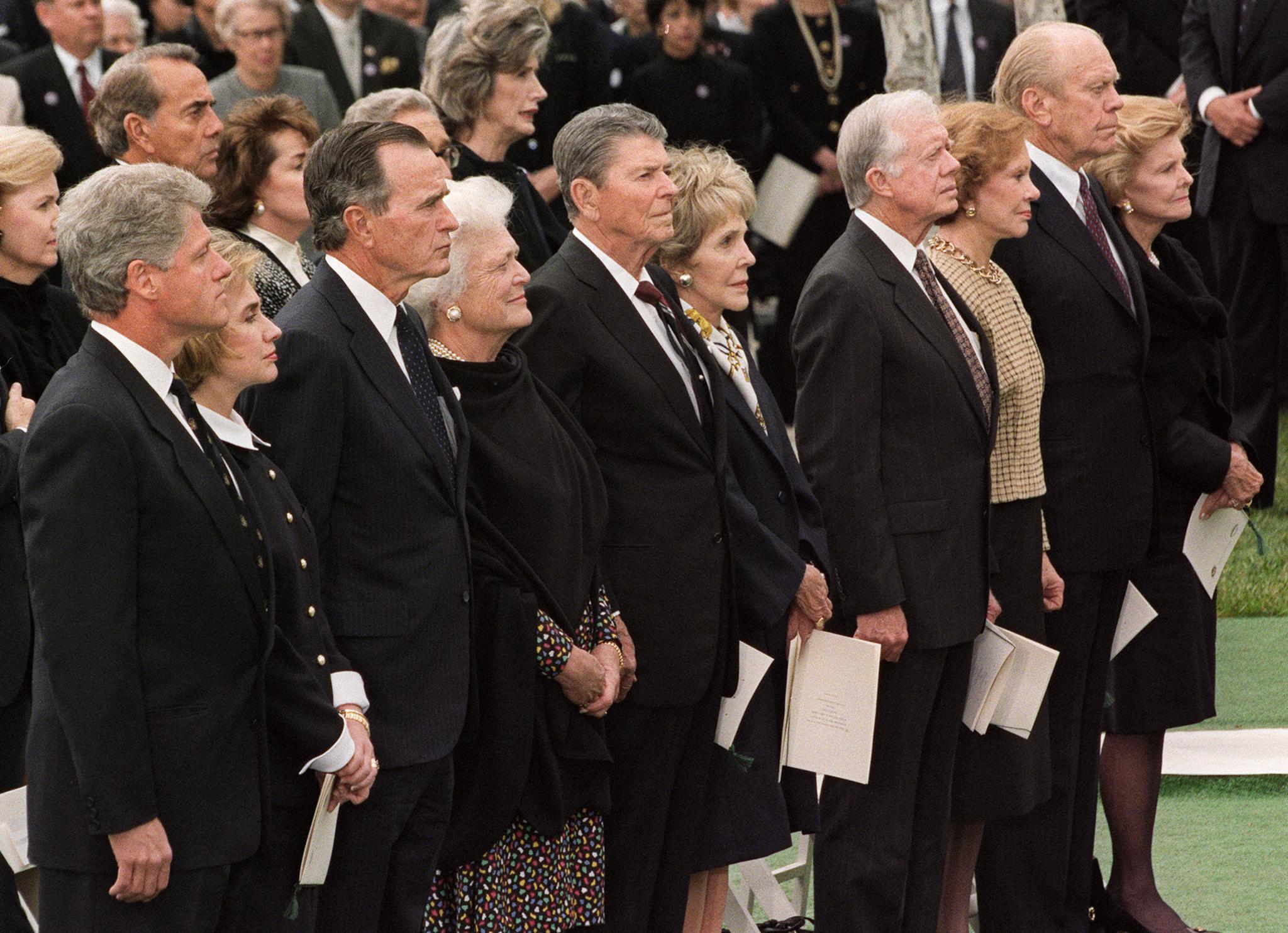
The US “conducts state funerals on behalf of all persons who hold, or have held, the office of president as well as a president-elect and other persons designated by the president,” according to the US Army Military District of Washington.
A state funeral lasts seven to 10 days and includes three parts – ceremonies in the president’s home state, ceremonies in Washington DC, and finally ceremonies in the state where they choose to be buried.
The ceremonies in the capital region may include Armed Forces honor guards, military bands, and units from the National Guard and the US Armed Forces reserves. Outside of the capitol region, services may also include local units.
Vice president takes the oath of office
If a president dies in office, the first thing that must happen is that the vice president takes the oath of office to become president.
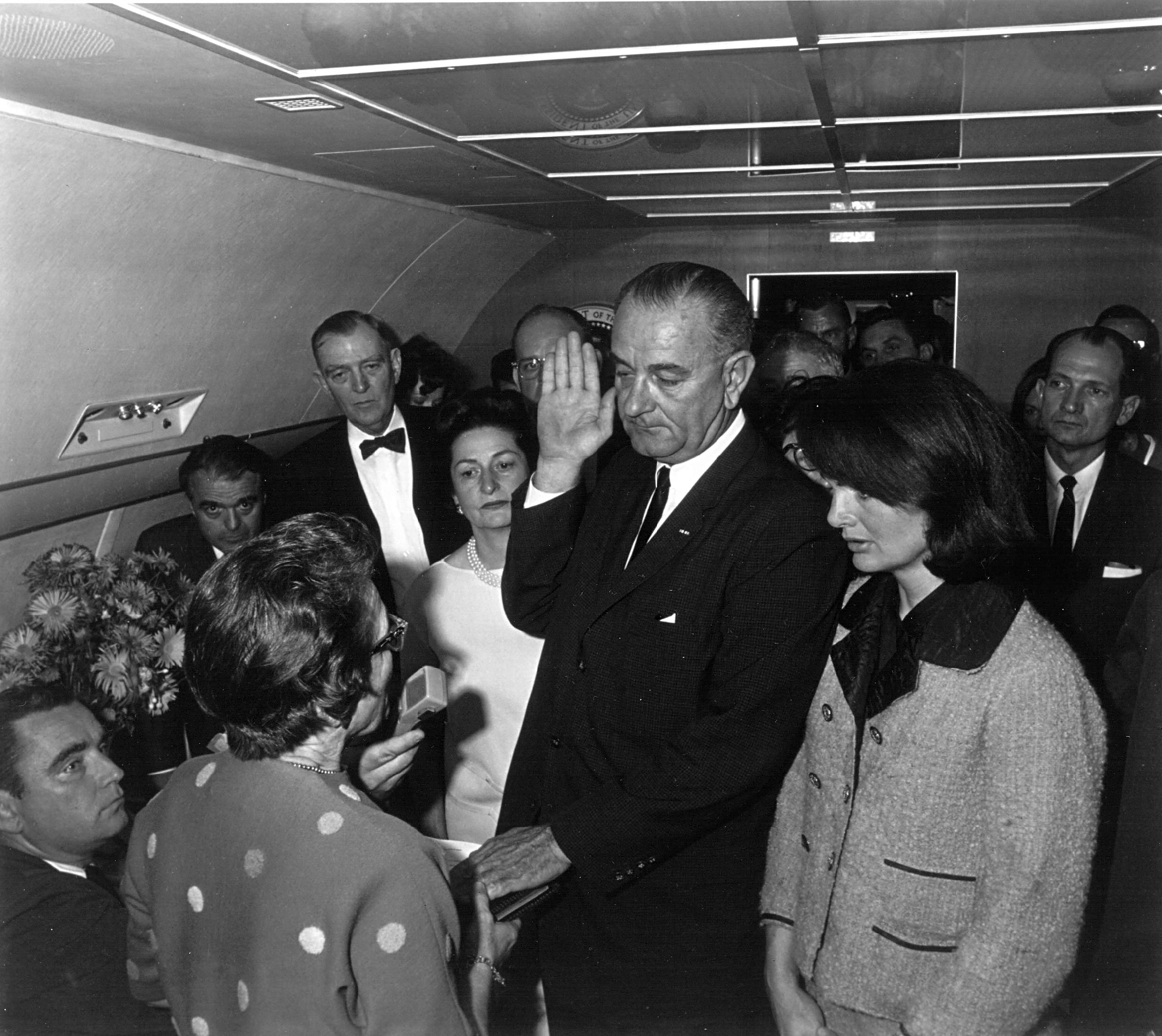
Planning the funeral
One of the first things a president must do is plan their own funeral, according to the White House Historical Association. Following the passing of a president, the family coordinates the proceedings.
The then-state funeral planner for public affairs for the Joint Task Force, National Capital Region in Washington, Barbara Owens, said in 2006 following the passing of Mr Ford that “Until the family has had a chance to meet with our commanding general and go over the events of the next days, we will not know what that schedule will be.”
“They can choose to have a simple funeral – they can choose to have a full honor funeral. It simply is up to the family,” she added at the time.
The issuing of a proclamation
When the White House is made aware of the death of a former president, the current president announces the death by proclamation before ordering the Department of Defense to organize a state funeral.
The president also orders federal agencies and departments closed to observe a national day of mourning.
Lowering the flags to half-staff
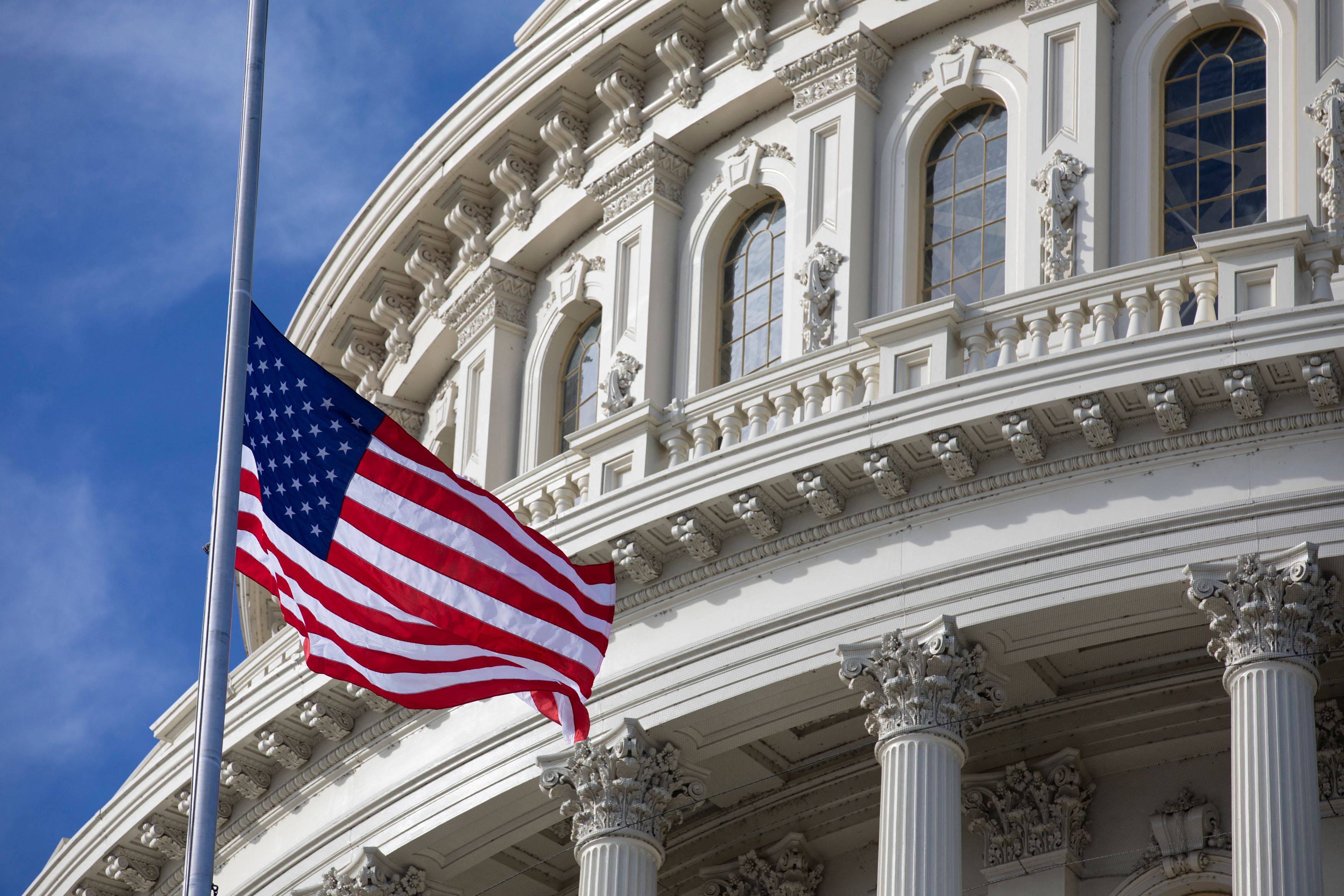
When a president dies, all federal buildings, grounds, and naval vessels in the US and its territories should fly the flags at half-staff for 30 days, according to the Department of Veterans Affairs.
Transporting the casket to the US Capitol and lying in state
After lying in state at the presidential library of a former president, as was the case for Reagan in California, the casket is then transported to the US Capitol to lie in state there. During transportation, the casket is escorted by the military and transported using a presidential plane.
In 2018, George HW Bush was transported from Houston, Texas to lie in state at the US Capitol for two days before he was buried at his presidential library in College Station, Texas.
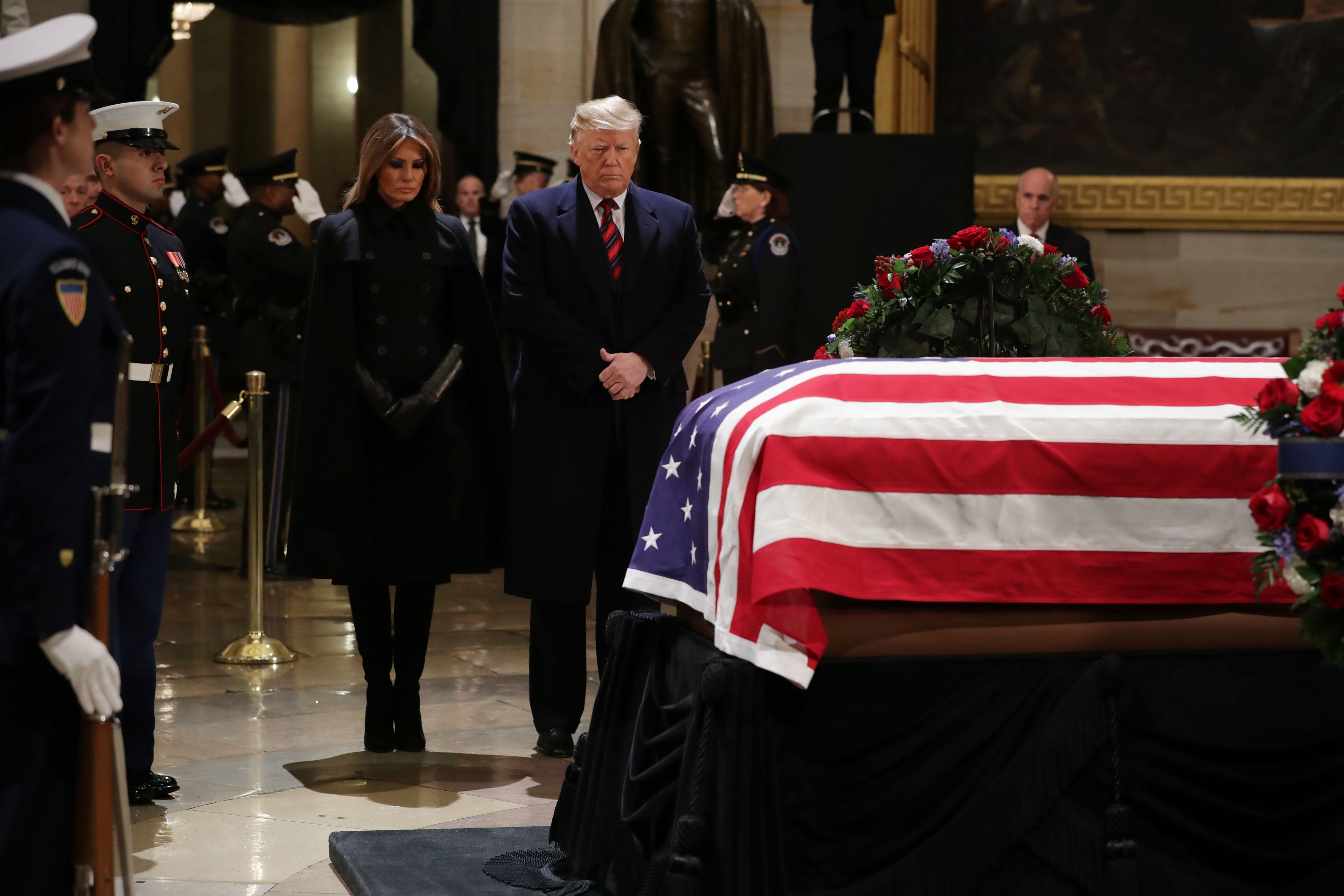
The lying in state allows current and former elected officials and the public to pay their respects.
Lying in state in the White House has so far only occurred for presidents who died in office.
The funeral
The funerals are traditionally held at the Washington National Cathedral in the nation’s capital. Events surrounding the funeral usually last for five days and the proceedings depend on each individual president.
In terms of seating arrangements, the presidential party comes first, followed by foreign chiefs of state, which are arranged alphabetically according to the English spelling of their country. After that, royalty representing chiefs of state are seated, followed by heads of government, the AP noted in time for Ford’s 2007 funeral.
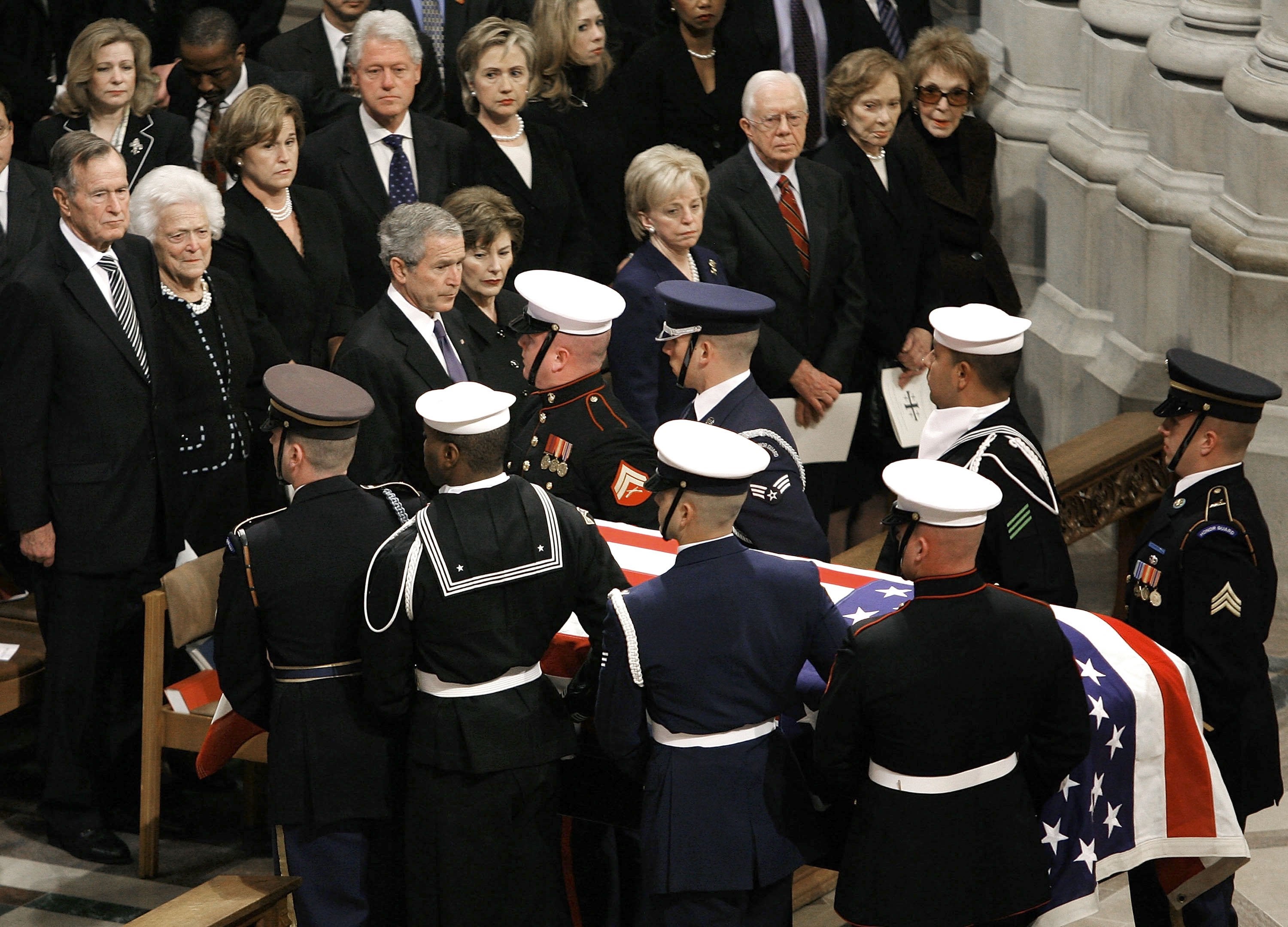
US military salute
When a president is buried, seven honor guards fire a three-volley salute at the gravesite of the president, and military installations around the country fire a 21-gun salute for the former commander-in-chief.
Funeral train procession
In the past, the caskets of several presidents traveled across the country by train to allow people all over the country to pay their respects. In 2018, George HW Bush’s family decided also to have his casket crisscross the nation.
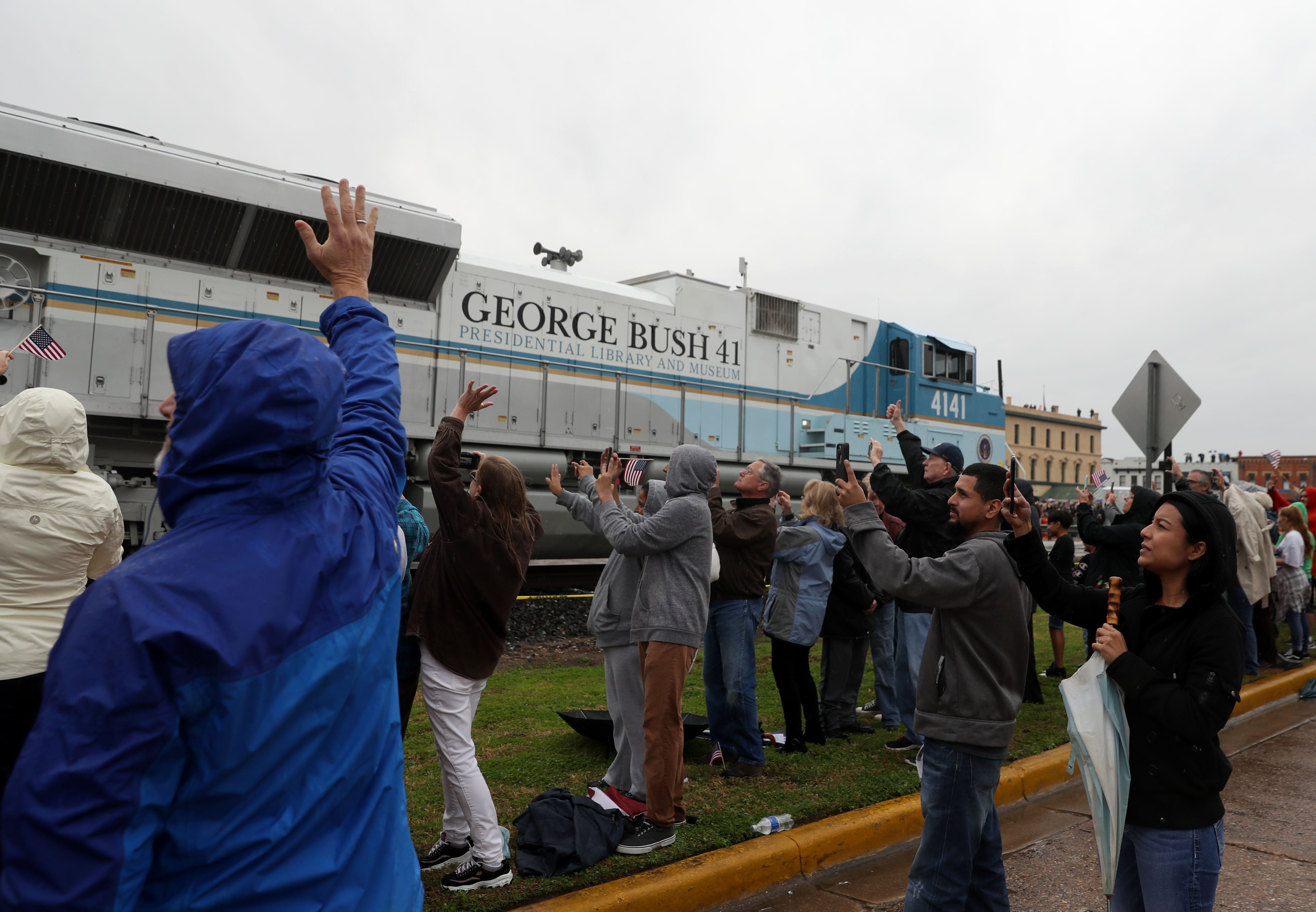
Burial
The president is finally buried, usually at a place that holds personal significance to them. Several presidents are buried at their presidential libraries while Presidents William H Taft and John F Kennedy are buried at Arlington National Cemetary.
The Associated Press contributed to this report

Join our commenting forum
Join thought-provoking conversations, follow other Independent readers and see their replies
Comments